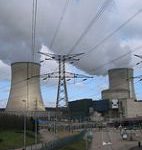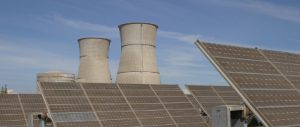The earthquake and tsunami in Japan have caused unprecedented problems for the country’s nuclear industry and the Fukushima power plant in particular. While the environmental impact may be largely national it is clear, even a few days after the accident, that it will have global ramifications for the nuclear industry.
These impacts are not likely to be uniform, however, and variations from country to country will arise from a variety of factors, such as the level of public involvement in the planning processes, the ownership of the energy industry and the local geographic and seismic conditions and risk perceptions.
Within the European Union, Germany has already said it will review its recent decision to extend the operating lives of its reactors and has ordered the temporary closure of the seven oldest, while Italy and Poland have stated that they intend to proceed with their plans. In India, the chairman of the Nuclear Power Corporation, the public body in charge of the design, construction and commissioning of nuclear plants, has said that the events in Japan have put “a big dampener” on their programme. While in Malaysia, the deputy prime minister has stated “we have an agency that is responsible and we are confident that they will implement what is best.”
In China, in a remarkable move, it was announced on Wednesday, March 16 that the authorities will suspend approving new nuclear projects until new safety rules are ready, although they did not say when these rules will be approved. The central role China has marked out for itself in the development of the global nuclear industry lends this decision international significance, and it is worth taking a moment to look in detail at the country’s nuclear pipeline and what is now at stake.
China came relatively late to the civil nuclear industry, only starting construction in 1985. This was after the global peak: thanks to accidents at Three Mile Island (1979) and Chernobyl (1986), coupled with electricity market liberalisation and the wider availability of cheaper natural gas, 1984 was the high water mark for new reactor construction projects around the world. That year, there were 33, compared with an average of only four per year over the last two decades. In 2002, the number of operating reactors peaked at 444.
As of January 2011, there are 441 nuclear reactors in operation. Of these, China has just 13, which provide less than 2% of the country’s electricity – the lowest percentage contribution of any country with nuclear power.
Despite, or maybe because of, its late arrival in the nuclear field, China now has an impressive recent history of construction starts. In 2010, it completed two new units (out of five globally) and started nine (out of 14 globally). It plans to continue the pace of new construction and the 12th Five Year Plan is anticipating 43 gigawatts of reactor capacity in operation by the end of 2015. Meeting this target will require the completion of all the reactors currently under construction, plus a handful more – presumably those ordered in the first half of 2011.
In any other country, it would be hard to believe in such a timetable. But recent construction times of four and half years make the target tough but just about credible. However, concerns have been raised about the impact of such rapid construction on supply chains and the availability of qualified staff. A research unit of the State Council, China’s highest administrative body, was reported as suggesting that the rate of growth should be limited.
And, although to date public acceptance has not been a major obstacle to nuclear deployment, this cannot be taken for granted. In particular protests against the Daya Bay facility have historically occurred in Hong Kong both before and after the transfer of sovereignty to China. In other parts of China too, protests are said to have delayed at least one new project. With new reactors proposed in up to 16 provinces, wider public engagement was likely even before the dramatic events in near neighbour Japan.
Meeting the 2015 target would increase nuclear contribution to electricity supply to around 5% and 3% of primary energy. And beyond that, China has proposed installed capacity of around 80 gigawatts by 2020. If achieved, that would give China the second largest installed capacity, behind only the United States.
While these potential deployment rates are impressive, China’s importance in the global nuclear sector is not just about construction numbers, but also the types of reactors being built. The world’s major reactor vendors, including French company Areva and US-based Westinghouse, are building their most advanced designs in China. In the case of Westinghouse, the AP1000 is the company’s flagship Generation III design and China is currently its only sale. Although the specific terms were not disclosed at the time of the announcement in July 2007, the deal was said to be worth around US$5.3 billion (34.8 billion yuan). One of the key factors in the contract was that it contained not only technology transfer for the reactor but for the back end services – namely, waste management.
Not to be outdone, in November 2007 Areva announced the signing of a €8 billion (US$11.2 billion) contract with the China Guangdong Nuclear Power Corporation (CGNPC) for two of its European Pressurized Water Reactors (EPR), to be built in Taishan, Guangdong province. At the signing of the deal, Areva stated that this would result in the deployment of the world’s third and fourth EPRs, after those being built in Finland and France. However, construction problems at both of these sites may lead to China hosting the world’s first EPR.
At the same time, an agreement has been signed between China and France which opens the way to industrial cooperation on nuclear waste. Under this agreement, the partners agreed to undertake feasibility studies related to the construction of a spent fuel reprocessing plant in China. The 800-tonne per year reprocessing plant will apparently be at Jiayuguan in Gansu province. In November 2010, an industrial agreement on this was signed, which Areva said was "the final step towards a commercial contract" for the project, which is expected to take 10 years to design, construct and commission.
China is also building reprocessing plants with domestic technology. In January 2011, state broadcaster CCTV ran a news item “announcing” a breakthrough in reprocessing at the small, pilot plant in Lanzhou, western China. It is unclear what the specific breakthrough was, given that the plant was completed six years ago, though there has been speculation linking it to ongoing uranium-supply negotiations. What is clear, however, is that China is actively obtaining the equipment for the full range of nuclear technologies – including plutonium-fuelled reactors – as options for the future.
To fuel the country’s growing reactor fleet, various Chinese enterprises have been actively purchasing options for the supply of uranium. CGNPC signed a 10 year deal in November 2010 for the supply of 24,200 tonnes of uranium from Kazakhstani nuclear firm Kazatomprom and, in the same month, a similar deal with Areva. In addition, CGNPC and Chinese equity funds each have a 24.5% share in Areva’s mines in Namibia, South Africa and the Central African Republic, capable of providing an additional 40,000 tonnes of uranium by 2022. CGNPC also signed a deal in November 2010 with Cameco of Canada for the supply of 13,000 tonnes of uranium through until 2025.
While China is on the forefront of the deployment of nuclear technology, it is yet to show the same determination for implementing international treaties and norms. Although China has signed and ratified the International Atomic Energy Agency’s Convention on Nuclear Safety, it is yet, as required by Article 5, to submit its national report on the measures it has taken to implement the obligations of the Convention. China has also become a signatory to the Joint Convention on the Safety of Spent Fuel Management and on the Safety of Radioactive Waste Management, but has yet to make public its national report. Providing information – both national and international – on safety and waste-management practices are important aspects of a transparent and ultimately a safer nuclear sector.
For over a decade, supporters of the nuclear industry have stated that there is a global renaissance and that concerns over security of supply and climate change will lead to new orders. However, this revival is yet to materialise and events in Japan may make it significantly less likely [see chinadialogue article “The nuclear decline” for more on the nuclear renaissance myth]. In the United States, for example, only five years ago Dennis Spurgeon, assistant secretary for nuclear energy at the US Department of Energy, stated it was conservatively estimated that 20 new reactors would be in operation by 2020. Today, predictions are at best for a quarter of this. In Europe, meanwhile, the only two reactors under construction are both behind schedule and over budget.
In fact, excluding China, there has been a net decrease of four reactors on the global grid over the last five years. While the number of reactors coming online will increase, this is in the main due to the industry in China, which has contributed over 60% of the global total since 2006.
The arguments for nuclear expansion in China may be compelling: rapidly rising energy demand, over-reliance on coal and its reserves – located away from primary electricity demand – and economic and political concerns over dependency on imported fossil fuels. However, the history of the global nuclear industry is testament to how quickly public opinion and political support can change as a result of technological failures and accidents, often caused by too rapid expansion.
With the final environmental, economic and industrial impact of the accidents at Fukushima still unclear, it is too early to say how this will affect the global nuclear industry. However, it is doubtful that any country’s nuclear programme – including China’s – will be fully immune to its consequences.
Antony Froggatt is a senior research fellow in the energy, environment and development programme at Chatham House – The Royal Institute of International Affairs.
Homepage image from DigitalGlobe shows the Fukushima nuclear plant in Japan.

